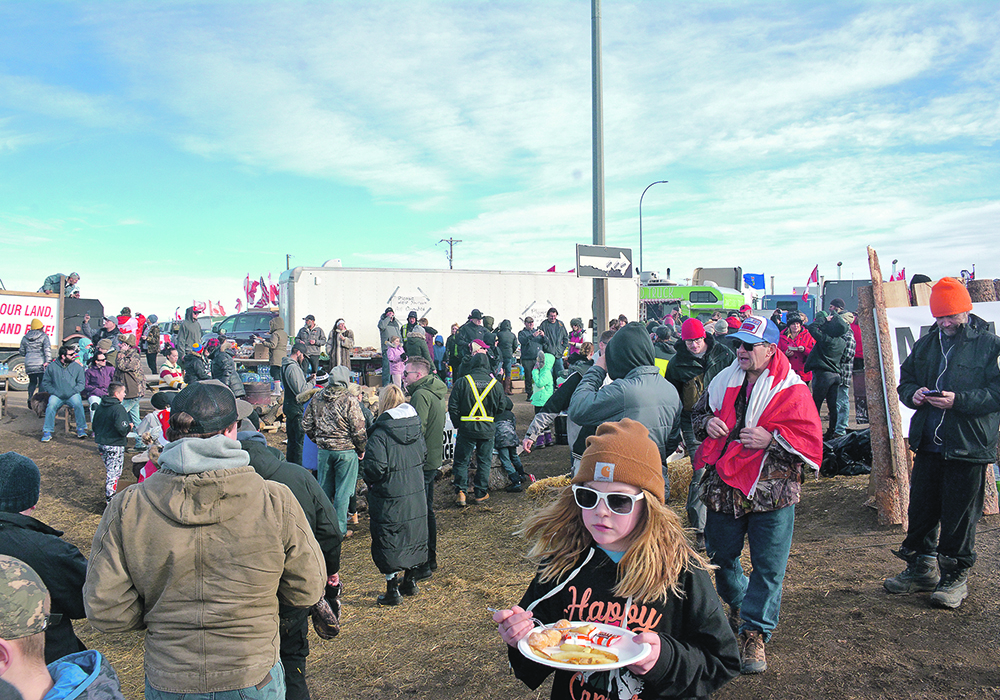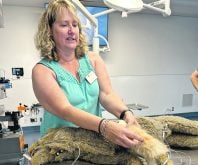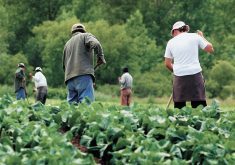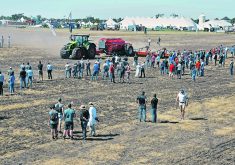Political scientists say the social unrest over public health orders is similar to what’s been seen in the United States
Protests against government restrictions shouldn’t have caught anybody by surprise, says a University of Alberta political scientist.
Jared Wesley and his team have watched the parallels between rural Saskatchewan and Alberta and the rural United States for about a decade. He said the underlying dynamics are the same and vaccine mandates have little to do with it.
“It’s a group of folks that feel like they’re being left behind by a bunch of forces beyond their control,” he said in an interview last week as truck convoys continued to block Parliament Hill in Ottawa, border crossings and legislatures across the country.
Read Also

Canadian Food Inspection Agency red tape changes a first step: agriculture
Farm groups say they’re happy to see action on Canada’s federal regulatory red tape, but there’s still a lot of streamlining left to be done
They called for the removal of Prime Minister Justin Trudeau but instead Conservative MPs, many of whom supported the protests, ousted their leader, Erin O’Toole.
Protesters carrying white nationalist symbols grabbed headlines, but Wesley said he saw many people who look just like those he grew up with in rural Manitoba.
“What I was struck by was how, for the first time in a long time, people could look at the TV and actually see somebody like them on Parliament Hill exercising some element of power,” he said. “It tells you just how disconnected these folks are from the seat of power in Ottawa.”
Wesley refers to many rural right-wing MPs as “prep school populists.”
“These are career politicians that blow through town once every month or so to promise folks simple solutions to complex problems, but eventually as we’re seeing now people just give up on that because there’s no follow through,” Wesley said.
He said the protest movement can be broken into four parts.
The vast majority of rural people are sympathizers. They are engaging on social media, supporting the truckers, and are vaccinated but support those who are not.
Protesters are the next layer. They attend rallies and events but are not engaging in illegal activity.
Next are the extremists who are flouting the rule of law, occupying places they aren’t supposed to, and threatening others, Wesley said.
“In many ways there’s now emerging a disconnection between the extremists and the organizers,” he said. “Many of the extremists who’ve now flocked to Ottawa don’t even know who’s running this thing. That’s the way sometimes movements get out of control.”
Finally, at the small core are the insurrectionists. Wesley said it’s fair to label them as such because their manifesto calls for a citizens’ committee of people that they appoint to replace Trudeau.
“It’s not a replacement government; that’s insurrection,” he said. “Those folks are connected to the Wexit party. They are connected to a number of white nationalist organizations.”
When all four layers are put together it becomes a much larger movement than people think.
Police may be able to tamp down the inner core, many of whom have turned to the Maverick Party and People’s Party of Canada, but the protesters and sympathizers have to be addressed in the long term.
University of Calgary political scientist Melanee Thomas, who studies elections, said the Conservative Party of Canada has to figure out where the right flank of the party is and doesn’t want to alienate voters. That’s why some MPs were comfortable meeting with protesters even in the presence of Nazi flags.
But she said in any election between 40 and 60 percent of Canadian voters are non-partisan.
“No one wins an election on their base alone,” she said, adding that O’Toole was right to try to pull the party to more moderate positions.
She said the political right in Canada is split among three elements: the economy, social conservatism and an anti-immigrant bias. These ideas are poorly connected to each other.
“If you understand how a lefty thinks about the economy, you have a really good understanding of how they think about social issues and also how they think about race and equity and diversity,” Thomas said.
“But for conservatives, they are not well-connected. To understand somebody’s social position you aren’t very good at predicting what they think about the economy. And if you understand what they think about the economy you’re not good at predicting how racist they are.”
Thomas said finding a new Conservative leader who can connect the elements will be difficult.
Wesley said those who got caught up with the extremists and insurrectionists should be given the chance to stand down gracefully.
“I think the Conservative leadership race is an opportunity for that,” he said. “It’s an opportunity for somebody to say … ‘I am actually listening to you and we’re here to build a platform that speaks to your interests.’ That’s the kind of leader that the Conservative Party of Canada needs now, and the irony is it’s the kind of leader that Erin O’Toole was in his farewell speech.”
















